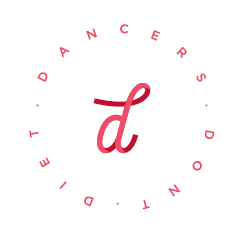Iron Deficiency in Dancers
Iron is probably the most well-known micronutrient, and it doesn't hurt to consolidate your understanding because dancers and athletes are at greater risk of iron deficiency than non-dancers/athletes .
What is Iron?
Iron is an essential trace mineral that is necessary in the production of red blood cells.
Iron from animal origin is called Haem Iron, which has high bioavailability, meaning it's easily absorbed by the body.
Iron from plant origin is called Non-Haem Iron, which has a lower bioavailability, meaning it needs some extra helpers to be absorbed efficiently by the body.
The main role of iron is oxygen transport. It also helps produce new blood cells when you're recoverying from training, and plays an important role in energy production.
What causes Iron Deficiency?
Depletion of your body's iron level can happen because of a few things:
Blood loss e.g. due to heavy menstruation
Endurance and/or high intensity training - you may have heard the term "sports anaemia", which refers to iron deficiency anaemia that occurs in athletes and dancers, especially those who are in chronic high intensity training or those who increase their exercise load dramatically
Limited food variety (inadequate intake of iron from foods)
Altered absorption in the gut (e.g. due to medical conditions such as Inflammatory Bowel Disease, Coeliac Disease and certain cancers)
Consequences of Iron Deficiency
Iron deficiency anaemia - Low iron levels lead to insufficient production of red blood cells
Impaired performance due to lack of red blood cells and its oxygen carrying capacity
Nausea
Infections
Tiredness / lethargy
Altered metabolism
Treatment and Prevention of Iron Deficiency
A blood test will quickly show your iron status.
If low, iron supplements or infusion are generally recommended.
It's also best to try and incorporate more iron-rich foods (along with absorption enhancers) so that you can prevent it from happening again.
Foods rich in Iron
Have at least one serving of iron-rich foods a day; more if you have iron deficiency and/or you are prone to it.
Animal foods rich in Iron (Haem Iron - easily absorbed)
Meat (beef, pork, lamb, kangaroo)
Seafood such as oysters
Plant foods rich in Iron (Non Haem Iron - difficult to absorb)
Nuts and beans
Dark green leafy vegetables
Vitamin C can help your body absorb Non-Haem (plant based) Iron
Plant-based iron are called non-haem iron and can be difficult to absorb. In this case, use the help of vitamin C which can enhance the body's absorption of non-haem iron.
Squeeze some lemon on your salad
Make a tomato bean stew
Drink orange juice or other fruit/veg juices high in vitamin C with your meal
Certain compounds such as tannin can hinder your iron absorption. If you have the tendency to be low in iron in general, try and have coffee/tea separate to your meals.
Also note that excessive intake of certain minerals such as calcium and zinc can hinder iron absorption, and this is often seen in dancers and athletes who rely on supplements. If you are taking supplements, talk to your GP or dietitian to make the most out of it.
DDD Centre for Recovery is here to help dancers of all ages and levels with their eating and body image struggles. Reach out for support today. Contact info@dancersdontdiet.com.au
